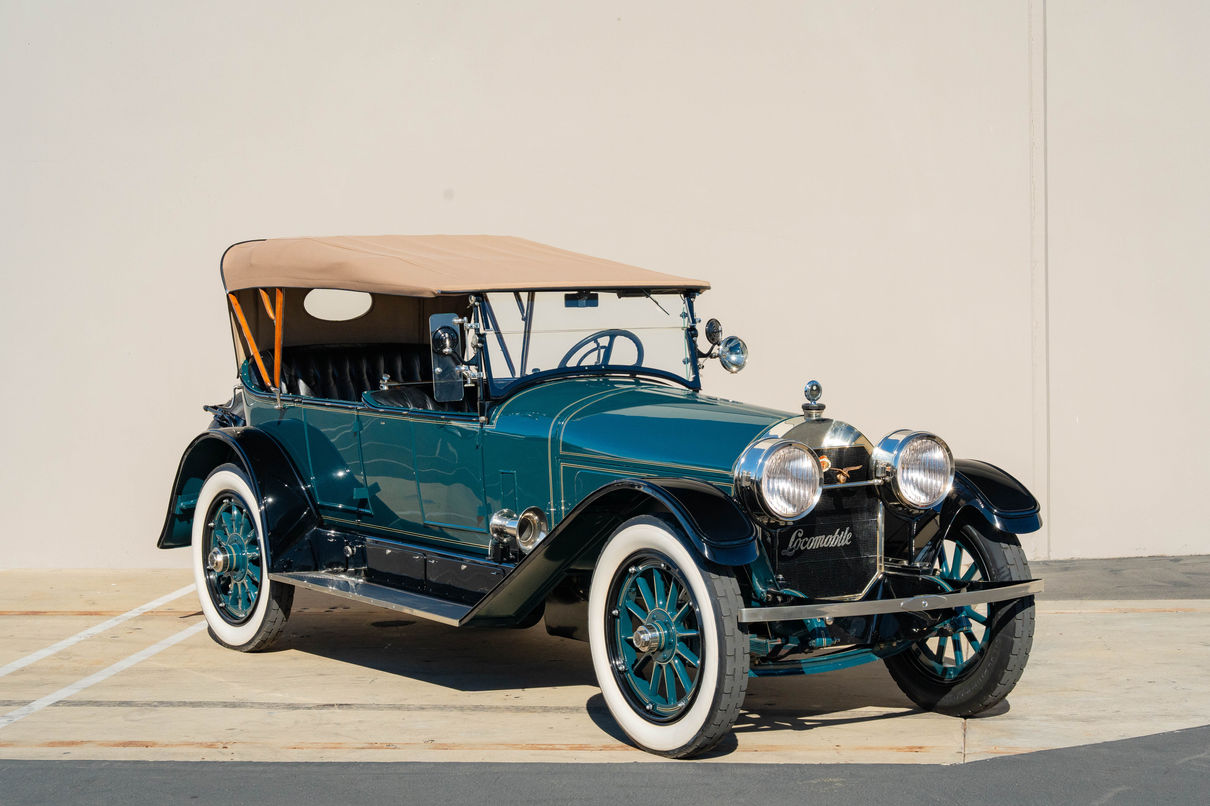Scroll down for description and more information
Click the main photo to enlarge
1919 Locomobile Model 48 Sportif
1919 Locomobile Model 48 Sportif
Engine - 525 Cubic Inch T-Head six cylinder
Transmission - 4-speed sliding selective gear
Horsepower - 100 HP
Production - undocumented, 5 Locomobiles remain in existence from 1919
“Easily the Best Built Car in America”
Beginning in 1899, the Locomobile Company of America was incorporated with the intent of producing steam-powered automobiles, a true competitor in the market at a time of rapidly advancing technology. The partnership between John Brisben Walker and Amzi Lorenzo Barber started out with the buyout of the Stanley Brothers steam car business in Watertown Massachusetts. Business disagreements between the two principals began almost immediately resulting in a short lived partnership. Barber would retain the Locomobile name while Walker would continue to produce the same vehicle under the name “Mobile”. Soon relocated to Bridgeport Connecticut, it did not take long for Locomobile to begin producing gas-powered automobiles. By 1904, steam-powered vehicle production ended, and the company focused all its efforts on producing its T-head gas-powered machine.
Early in their history the Locomobile was a major competitor in racing, competing in The Gordon Bennett race in France and Vanderbilt Cup races, among others. In a world often dominated by the European automobile producers, victory was achieved by Locomobile in 1908 when George Robertson piloted the Locomobile that would become forever known as “Old 16” to victory in the Vanderbilt Cup. A few more wins were achieved, but by the end of 1908 the company focused all its efforts on luxury automobile production and ceased racing altogether. Introduced in 1911, the Model 48 T-Head six cylinder engine would carry on as long as the company itself, ceasing operations in 1929. Advanced for its time, and with a keen approach to quality, the Model 48 quickly gained a reputation as the “American Mercedes”. By 1914 the company had developed a custom body design department, headed up by J. Frank De Causse. In 1916 De Causse gained credit for designing the first ever Dual Cowl Phaeton and by 1917 he had developed every conceivable design for the Model 48, marking the first time an entire Model line had been styled by an individual versus just a few custom offerings. Inarguably, the Model 48 Sportif design, the company’s four-passenger phaeton, became an instant favorite among buyers and the same has held true with the collection hobby for decades.
This 1919 Model 48 Sportif was ordered new by H.E. Freund of New York City, a prominent attorney and partner of the law firm Sherman, Sterling, & Wright. The Sportif was used solely at Freund’s summer home in Ridgefield Connecticut, and stored there through the winters. It would remain at his summer home until Freund’s passing in 1954. Freund was a member of the National Highway Association and upon special request, had an Eagle Mascot of the association added to the front of his car which remains to this day. This Locomobile was purchased from Freund’s estate by Miley Heinbaugh who continued to care for the car to keep it on the road, only doing what was required and keeping the rest original. By 1965 the Sportif was purchased by Lee Davenport, the name that it would go on to be most closely associated with for decades to come. Lee was the primary inventor of radio-controlled anti-aircraft gunfire during the Battle of Britain, among numerous other engineering feats for military application. Davenport began restoration of the Model 48 Sportif in 1971, returning the car to its exact factory new configuration right down to the colors.
The Locomobile quickly earned AACA First Junior and Senior awards in 1973 following the restoration, and an honor above all, it won the VMCCA Alexander Stein Trophy for Best Locomobile in 1974 at the organization’s national annual meeting. This Locomobile was lovingly maintained by CCCA Member James Bartlett over the last 25 years prior to joining the Singleton Collection in 2025.
















